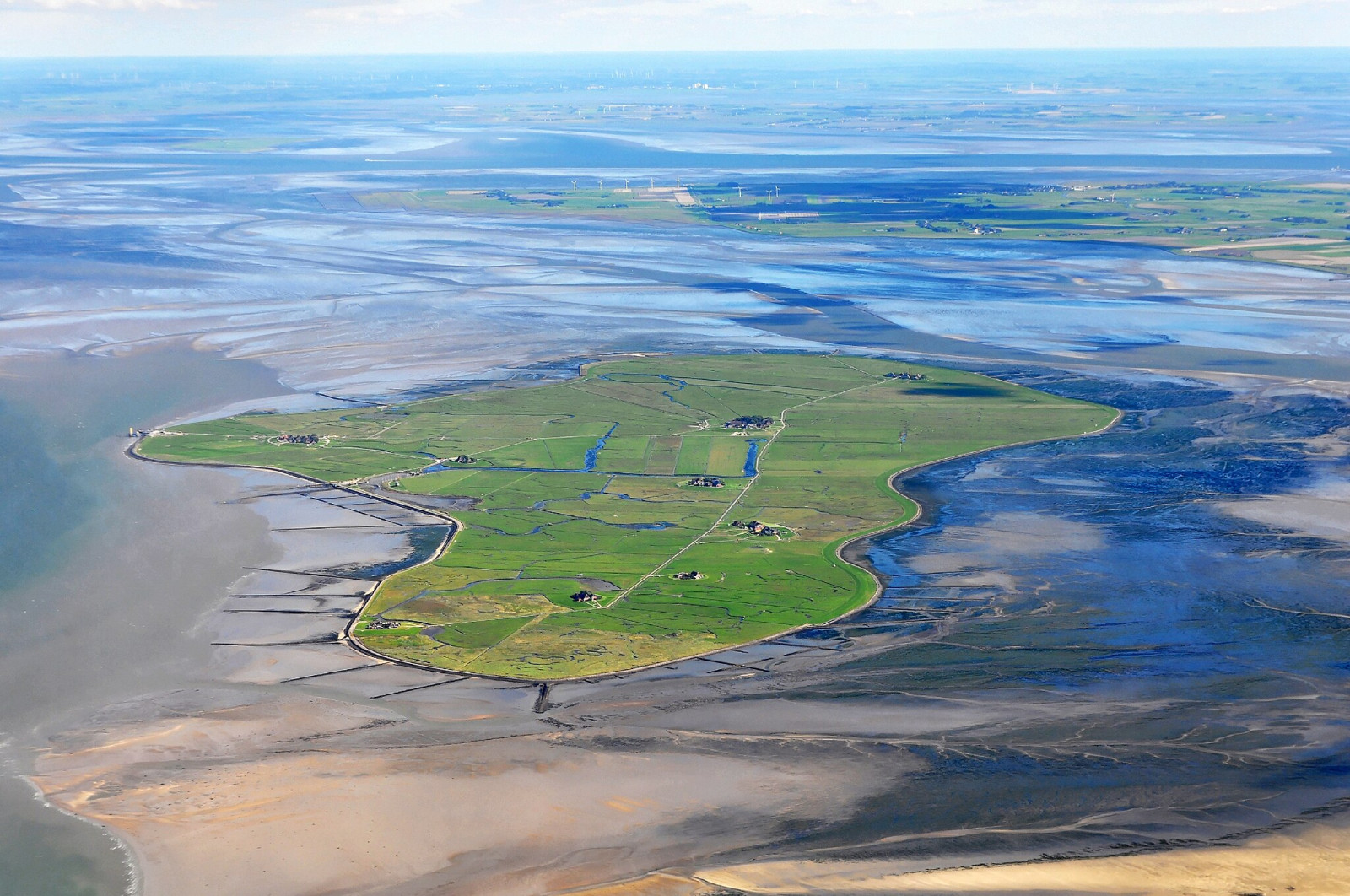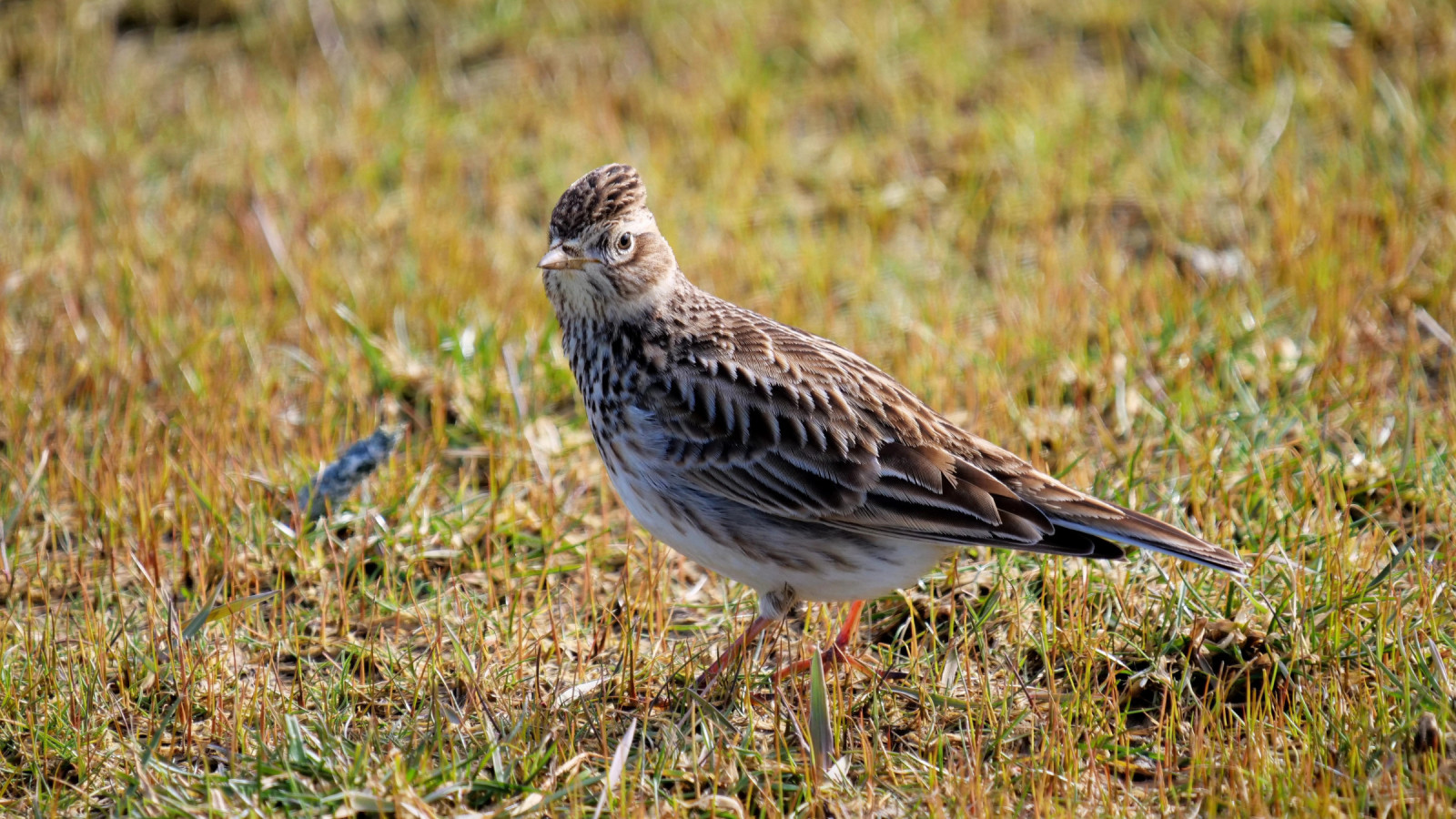Beskrivning
Hallig Hooge is characterized by large fallow areas, some of which are used for livestock farming. There are large areas of salt marsh on the east and west sides of the Hallig. While the North Sea is on the north side, large mudflats are exposed around the rest of the Hallig Hooge at low tide. Isolated hills with clusters of houses, small ponds and shrub structures allow very close observations of migrating songbirds, especially during migration periods.
On a small sandbank on the northeastern side of Hallig Hooge is a hightide roost of waders and other waterbirds. But during very high tides the entire island is used as a roost. Breeding birds include strandskata, rödbena and småtärna on the small sandbar. Other birds you can encounter are depending on the season prutgås, bläsand, gravand, ejder, småskrake, skärfläcka, kustpipare, ljungpipare, storspov, myrspov, större strandpipare, roskarl, kärrsnäppa, stenskvätta, ängspiplärka, silvertärna, fisktärna and Kentsk tärna. During migration time you can also encounter birds such as rödhalsad gås, snösparv, skärsnäppa, tajgasångare, Sädesärla ssp yarrellii, göktyta and all types of songbirds like trushes and flycatchers.
Detaljer
Tillgänglighet
Hallig Hooge can be reached by ferry from Schlüttsiel (see link below). Press P on the map for directions to Schlüttsiel. The crossing from Schlüttsiel to Hallig Hooge takes approximately 1 hour and 15 minutes. Every point on the island of Hallig Hooge itself is easily accessible on foot or by bike. You can get around on foot on the Warften (small hills, including clusters of houses and bush structures), but there are also some private properties and private paths.
Terräng och habitat
Våtmark , Slätt , Spridda träd och buskar , Platt , Hav / ocean , Dyner , Damm , Gyttjig strand , Jordbruk , Vassar , Stad/byFörhållanden
Platt , Kulligt , Öppet landskap , Risk för högvatttenRundtur
JaTubkikare behövs?
Kan vara användbartBästa säsong för skådning
Året runtBästa tid för ett besök
Vårsträck , HöststräckRutt
Asfalterad väg , Bred stig , Grusväg , Smal stigHur ansträngande vandring
Lätt vandringNås
Till fots , Cykel , RullstolFågeltorn / plattform
NejExtra information
rödhalsad gås bergand sjöorre knipa bläsgås bergand Smådopping gök nattskärra tornseglare sothöna Trana tofsvipa mindre strandpipare fjällpipare spovsnäppa morkulla enkelbeckasin smalnäbbad simsnäppa drillsnäppa skogssnäppa gluttsnäppa kustlabb tretåig mås skräntärna smålom havssula Silkeshäger skedstork Fiskgjuse blå kärrhök kärrsångare rörsångare grönsångare tajgasångare bergtajgasångare kungsfågelsångare Taigagransångare trädkrypare trädgårdsträdkrypare ringtrast dubbeltrast stenskvätta forsärla skärpiplärka Sädesärla ssp yarrellii Grey-headed Wagtail (thunbergi) Gulärla ssp flavissima bergfink vinterhämpling Gråsiska Sävsparv duvhök fjällvråk ormvråk kungsfiskare göktyta stenfalk Pilgrimsfalk törnskata Skata kaja råka gråkråka berglärka trädlärka härmsångare sävsångare




